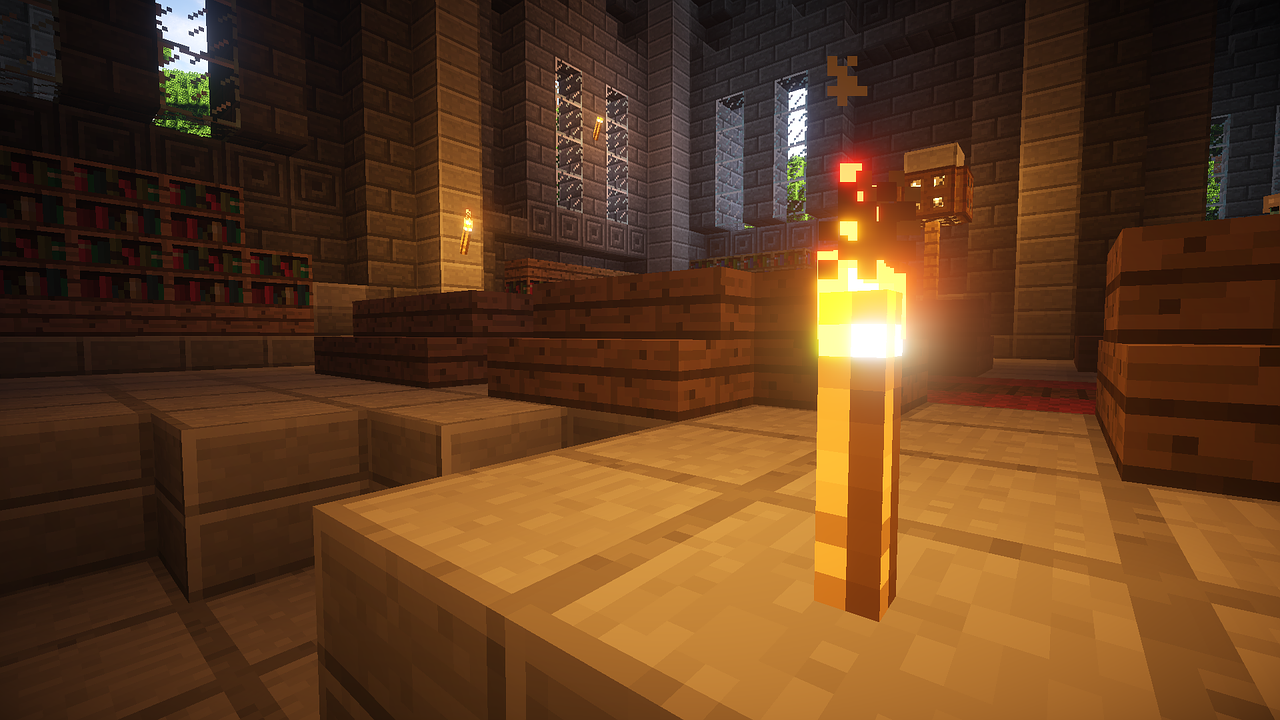
Before I had kids, here’s the sort of parent I thought I would be: I’d have treat-filled weekly movie nights, read my favorite books to attentive little people, and deliver fast-talking quips at the dinner table. The Gilmore Girls come to life, basically.
Instead, 12 years in, I find myself a Minecraft mother connecting with my sons – let’s call them Mr 8 and Mr 12 – through its blocky, pixelated interface!
If you are nodding as you’re reading this, greetings and commiserations. For those uninitiated to the world of Minecraft, there’s a reason it’s the best-selling video game of all time. It seems to offer endless gameplay possibilities; players have immense creative freedom because of the open-ended nature of the game and its complex crafting systems.
I thought Minecraft would be a fad with the kids, but they’re still fascinated six years on. Throughout this time, both kids have learned so much from the game: problem-solving, collaboration, compromise, even some basic programming skills. But the most surprising thing of all? They’ve learned a lot about money management and financial literacy! When teaching your kids about money habits can be a challenging topic to navigate, who knew that letting your kids play video games could be an excellent way for children to learn critical life skills?
So just what valuable money lessons did my kids learn from Minecraft? I recently sat down with both of them for a Q&A, and here’s what they told me.
The primary game mode in Minecraft is called Survival. The goal for players is to collect resources, build shelter, fight off mobs (beings or living entities in the game), manage their hunger levels, and explore the world.
Survival mode, my kids tell me, teaches you how to strategize with limited resources. “Early in the game, you have to decide what you want to do with the materials you have, like whether you want to make an iron pickaxe or an iron helmet. An iron pickaxe is more useful because it’ll help you mine for stuff a lot faster,” the eight-year-old said.

My 12-year-old plays a form of Minecraft called Hypixel Skyblock, a popular survival game that lets you expand your own world infinitely by completing challenges, gathering materials, and trading with other players. It’s an MMORPG or massively multiplayer online role-playing game with 30 to 50 thousand players on the server at any given time.
The economy, says Mr 12, is driven and run by the players. If there is a high supply and low demand for an item, its price will go down. If supply is low and demand is high, then prices will go up. Take crop farming for example. If many players farm wheat at the same time and there’s a glut in the marketplace, then the price of that commodity will go down.
Both kids have learned so much from Minecraft, but the most surprising thing of all is that they’ve learned a lot about money and finance!
He also cites the example of the Stock of Stonks. It was created as a test item for Skyblock’s marketplace, the Bazaar, to see if it worked properly. But over the next year, its original purpose was forgotten. Players started hoarding the stock, like cryptocurrency. “It does literally nothing, but the price went from $5,000 to $300,000 per piece. If you’d bought it cheap and at sold higher prices, you would have made a lot of money in the game,” he mused.
“Don’t spend on dumb things if you’re saving up for something big that you want,” Mr 12 cautioned. Valuable advice indeed, and one which many adults (including his mum!) could benefit from.
When I asked him for more details, he talked about the time he saved up for the wonderfully-named Shadow Assassin Chestplate. It cost $40 million coins and took one month of actual Earth time to save up for. By exercising a ninja-level of self-restraint, he slowly saved the coins he earned, to buy the best armor he could afford to help him better defeat monsters.
In video games, as in real life, flipping can be a lucrative gig.
There are two different kinds of flipping in Skyblock:
Mr 12 related the story of the fluctuating price of the Superior Dragon Chestplate. When it was listed in the Auction, players could either use the ‘Buy It Now’ option or wait for the auction to run its course. As in any real-life online auction, there could be multiple bids placed before an auction closes. However, if demand isn’t high enough, and the item attracts only a small number of offers, you could potentially get the Chestplate (valued at a cool $13M coins) for just, say, $10M.
“You could then sit on the item for a bit until demand rises again and sell it on the open market again for $13M,” says Mr 12.
On the flip side, Mr 12 told me about a time when flipping didn’t go according to plan. He’d bought a sword called Aspect of the Dragons for $6M. The very next day, the price dropped by $5M to $1M.
Ouch.
I asked him how that made him feel.
“I was kinda sad. But what happens, happens,” he said.
“Someone from my (real-life) cricket team paid me $100,000 coins to help him craft some armor because I had the requisite skill level.”
Hang on. So other players can pay you for your expertise and specialist skills? Outsourcing for the win! Another powerful money lesson learned.
We tried to come up with a real-world analogy, and we thought a registered electrician described it best. You might figure out how to install a new powerpoint in your bathroom by looking at online videos, but only the work of an accredited tradesperson will come with a Certificate of Compliance, and the resulting installation passing muster with your insurers!
Mr 12 was telling me about Dungeons in Skyblock and how Level 7 has the best items. However, to acquire the items, you had to beat the level. If you didn’t know how to do that, you could pay someone to “carry the party,” like how the MVP carries the sports team. When this player bests level 7, the whole team achieves the level and can get all the good things it has to offer.
But how could you make sure the person you paid to “carry the team” was legit, and would be up to the task?
“There’s an app called Party Finder, where you try and find trusted people. The buyer is partly protected because you pay half the amount as a down payment before the expedition, and the other half once it’s completed,” he said
When I asked Mr 12 why he didn’t just practice so he could beat Level 7 of the Dungeon himself, he said, “You have to be really committed to achieving that. It’d probably mean you have no other life. I wouldn’t be able to go to school and do other things!”
Mr 12 had learned that time is your most precious resource. If you spent time learning new skills in Minecraft, you’d have to accept that other aspects of life would have to give.
And this lesson in opportunity cost was probably the most important lesson of all.
As for me? I don’t think I’ll ever look at Minecraft the same way again. I’ll still keep the screen time limits though!
*Minecraft image by allinonemovie under Pixabay License. *

Dora is Head of Marketing here at PocketSmith. She’s the mum of two boys, and calls both Singapore and New Zealand home. She’s obsessed with succulents, sci-fi and bubble tea, and is waiting for the day a novel will combine all three. Maybe she should just write it herself.